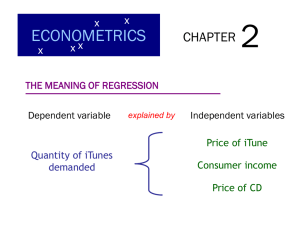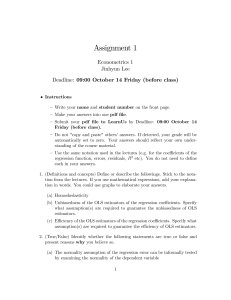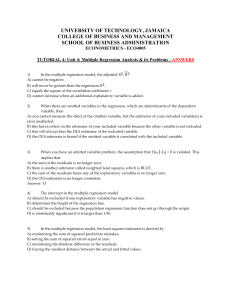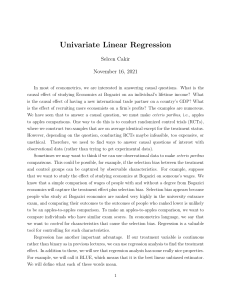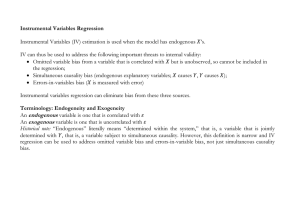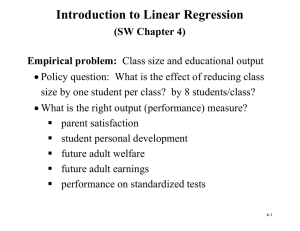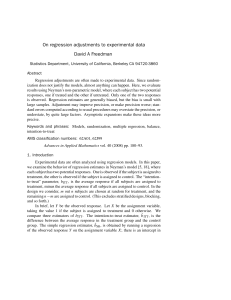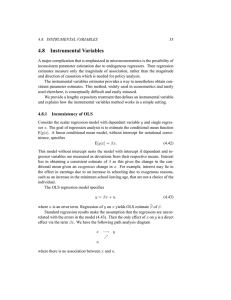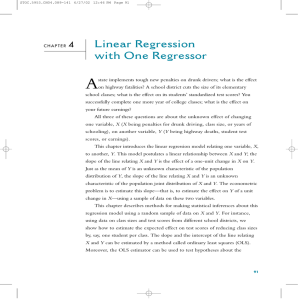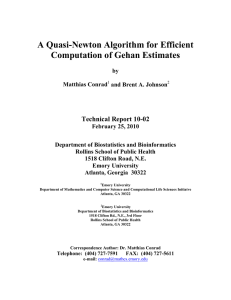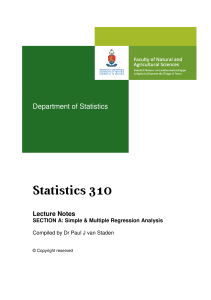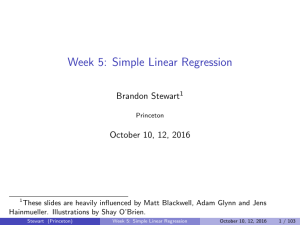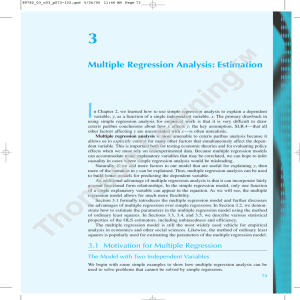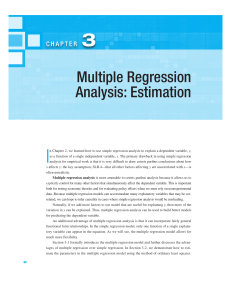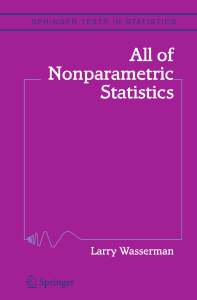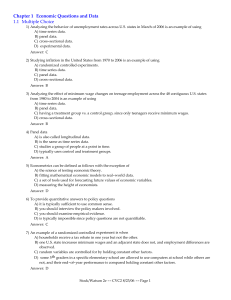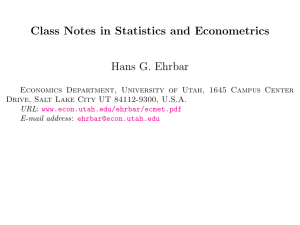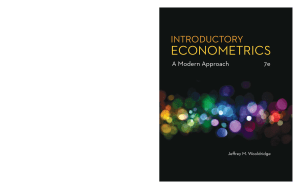Document 14871707
advertisement
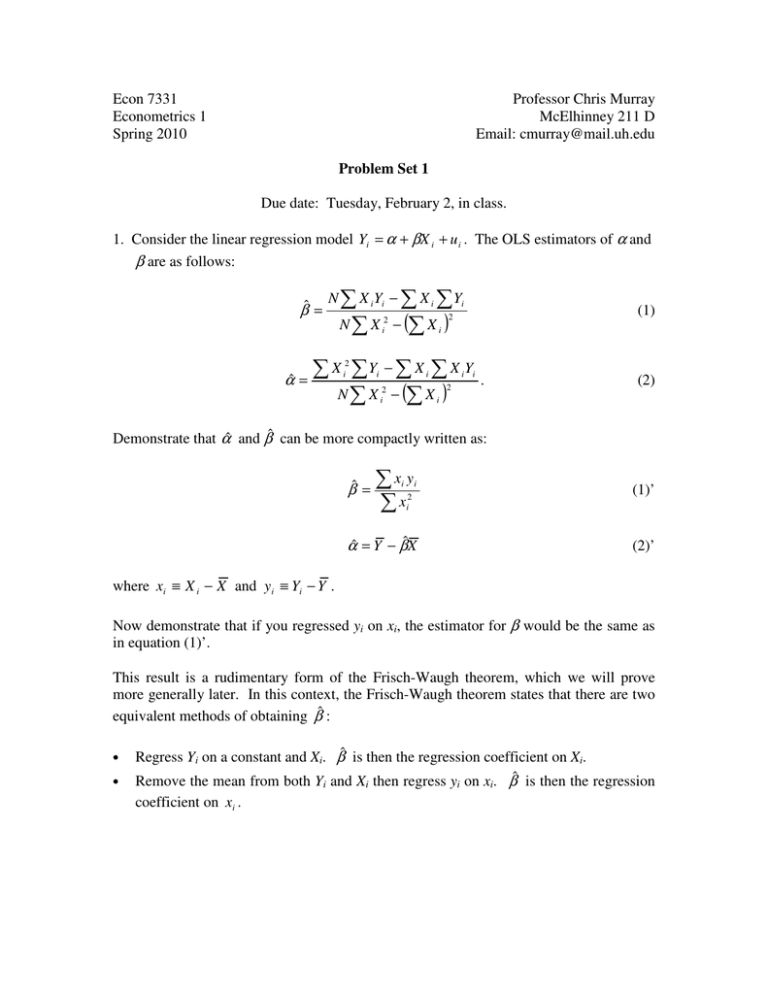
Econ 7331 Econometrics 1 Spring 2010 Professor Chris Murray McElhinney 211 D Email: cmurray@mail.uh.edu Problem Set 1 Due date: Tuesday, February 2, in class. 1. Consider the linear regression model Yi = α + βX i + u i . The OLS estimators of α and β are as follows: βˆ = αˆ = N ∑ X i Yi − ∑ X i ∑ Yi (1) N ∑ X i2 − (∑ X i ) 2 ∑ X ∑Y − ∑ X ∑ X Y N ∑ X − (∑ X ) 2 i i i i i 2 2 i . (2) i Demonstrate that αˆ and βˆ can be more compactly written as: βˆ = ∑x y ∑x i i (1)’ αˆ = Y − βˆX (2)’ 2 i where xi ≡ X i − X and yi ≡ Yi − Y . Now demonstrate that if you regressed yi on xi, the estimator for β would be the same as in equation (1)’. This result is a rudimentary form of the Frisch-Waugh theorem, which we will prove more generally later. In this context, the Frisch-Waugh theorem states that there are two equivalent methods of obtaining β̂ : • Regress Yi on a constant and Xi. β̂ is then the regression coefficient on Xi. • Remove the mean from both Yi and Xi then regress yi on xi. β̂ is then the regression coefficient on xi . 2. Prove the following: E (αˆ ) = α var(αˆ ) = σ 2 ∑ X i2 N ∑ xi2 . − Xσ 2 ˆ ˆ cov(α , β ) = ∑ xi2 3. Prove that if Yi is regressed only on a constant that the OLS estimator is equal to the sample mean of the dependent variable. What is the R 2 from this regression? 4. Consider a regression without a constant term, i.e. Yi = βX i + u i . Yi and X i are not in deviations from their respective means. Argue that the R2 from this regression may be negative.




